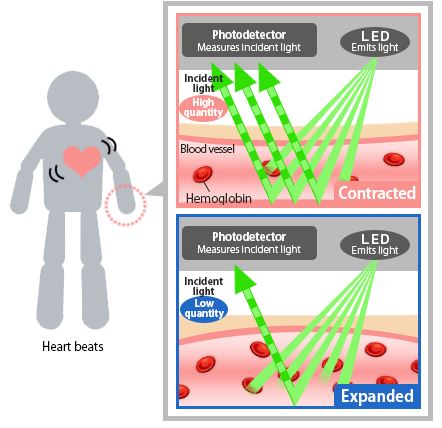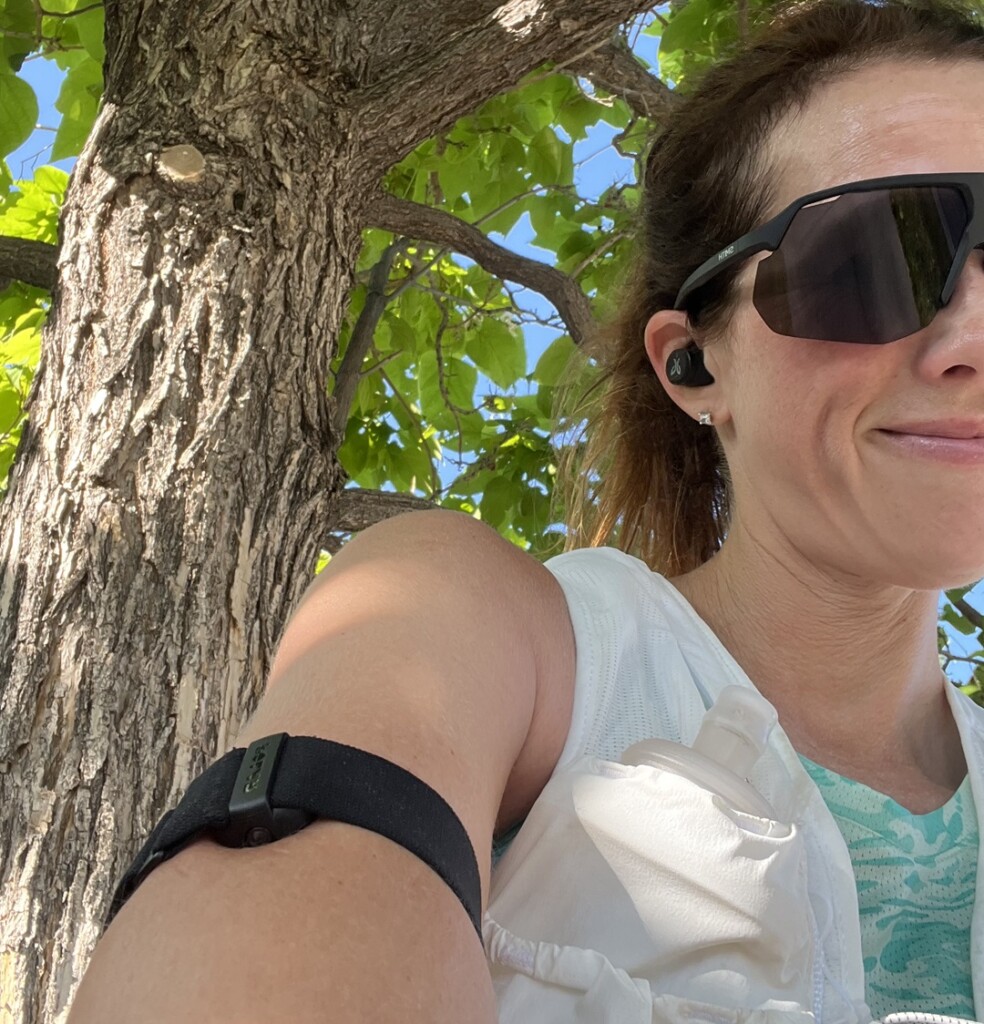Products are carefully selected and evaluated. If you buy through a link we may earn commission.
For over a decade I’ve been utilizing heart rate on my runs and thus testing out GPS watches, chest straps and more to find accurate readings. When armband heart rate monitors popped on the scene, I was curious how accurate they could possibly be? Let’s dive in to the Polar OH1+ review and find out! For many years, we’ve called the chest strap the gold standard for HR monitoring during activity. This is largely because it’s wildly more accurate than an optical wrist based reading. In fact, a chest strap is considered up to 99.6% accurate when used correctly, for a non-medical grade device that’s pretty good.
For many years, we’ve called the chest strap the gold standard for HR monitoring during activity. This is largely because it’s wildly more accurate than an optical wrist based reading. In fact, a chest strap is considered up to 99.6% accurate when used correctly, for a non-medical grade device that’s pretty good.
For years I’ve told you the Polar H9 chest strap is a great option to pair with any running watch. It’s what I still use as my default for testing watch accuracy!
But now, we have another option…the armband. So what’s the deal? Is it as accurate? Fit? Feel? I’m here to give you the goods.
You can also skip down to the Polar OH1 review, but I think this part is important!
How Optical HR Monitors Work?
Since armband technology is pretty similar to what’s on your wrist, let’s first explain what it is and then dive in to how it could be more accurate on your arm.
Optical heart rate monitors operate using a technology called Photoplethysmography (PPG), which has long been used in medical settings with finger clips to measure heart rate. These monitors work by shining a low-intensity light through the skin to detect fluctuations in blood flow beneath the surface (caused by contraction), allowing an algorithm to then determine the heart rate.
A few of the long term issues they’ve found along the wrist is lack of blood flow when it gets cold, issues with too much bouncing causing a change, problems reading on freckled or darker color skin.
There are various types of sensors and algorithms used across the different brands.
Some use three LEDs, others use two; some rely solely on green LEDs, while others red LEDs. Data shows red is more accurate, and why it’s used in medical grade, BUT it also has a lot more variations when we start using it with movement and the sensor bouncing.
One 2019 study showed, “The strength of the relationship declined as exercise intensity increased for both devices. These findings indicate that the accuracy of real-time HR monitoring by the Apple Watch and Fitbit Charge HR2 is reduced as exercise intensity increases.”
So while these aren’t Garmin or Polar watches with more advanced running technology…it’s very similar tech when it comes to heart rate.
Polar OH1+ Review
The first thing we have to talk about is how much more comfortable and armband monitor is than a chest strap. At least for most women and for anyone training in high humidity. The amount of chafing I had in Miami from my monitor…yikes.
So far, I’ve worn the Polar armband on a variety runs from long roads to trails to speed workouts without any issues because it’s just sitting on the arm and not moving around. The one issue could potentially be if it were hitting your hydration pack? But I always wear a pack and have not run in to this.
And to answer your question, it’s now my go to HR monitor while running.
I will still use the H9 or H10 to test accuracy, but this is my day to day option. Even if the chest strap is slightly more accurate, simply getting people to USE the armband is easier and thus a winner.
 Set up is extremely easy and the Polar OH1+ is going to pair with any watch or you can just use the Polar flow app, not just a Polar GPS watch. Right now, I have used it mostly with my Garmin 265.
Set up is extremely easy and the Polar OH1+ is going to pair with any watch or you can just use the Polar flow app, not just a Polar GPS watch. Right now, I have used it mostly with my Garmin 265.
You will need to initially pair it with the Polar Flow app. I believe this is mostly because of the internal memory available. But that process is a quick couple of steps, no strap licking involved (my chest strap runners know what I mean!)
Charging involves popping it in to a little case which you then plug in to an USB charger port. It will flash while charging, so you know when it’s done.
Polar OH1+ Specs
- One size armband
- Bluetooth and ANT+ connections
- 200 hours internal storage
- 12 hour battery life
- Clip included to use on your swim goggles
- $59
- Available here on Polar.com
Note there was at one time a Polar OH1 which is different than the current model, but I tend to be using OH1 interchangeably to reference the OH1+, which is the only available option now.
Issues with the Polar OH1+
I can’t say it’s all roses, I have two issues with the armband:
1. In the winter, I get dressed and then realize I didn’t put it on…ugh.
2. In the winter, I put it on get dressed, do my warm up and then try to push the button to turn it on…I can’t tell if I turned it on or not because I can’t see the light through my clothes. This is quickly remedied when I turn on my GPS to an activity and it says that it’s connected.
3. I don’t turn it on sooner because I have no idea how much battery is left and I am not the person who remembers to charge it after every run.

How Accurate are Armband HR Monitors?
Armband heart rate monitors are more accurate than the wrist primarily because the upper arm is a great location for HR measurement. Unlike the wrist, the upper arm typically has more tissue, which allows for higher quality readings.
Additionally, the upper arm absorbs vibrations better than the wrist, which is beneficial for activities like ohhhh say running.
During indoor workouts involving hand movements, such as weightlifting, wrist-based monitors can struggle due to strain, but upper arm monitors are rarely affected.
Moreover, optical heart rate straps (OHRM) on the upper arm are not prone to dryness issues that can affect chest straps. You know how you have to wet your chest strap before putting it on…well it needs that moisture to continue reading well. As a sweater, that’s never been an issue for me, but for some of you.
Chest Strap Vs Armband Heart Rate Monitor
2017 research in the Journal of the American Medical Association Cardiology found a chest strap had a 99 per cent correlation with an electrocardiograph
And as noted above, there was a 2017 in Journal of Medicine and Science in Sport and Exercise which showed a Polar H7 to be in 99.6 per cent accurate when tested against an ECG. Now the Polar H9 and H10 are available.
Polar OH1 Vs Verity Sense
At about $40 more the Verity Sense has about 18 hours more battery life, the ability to broadcast at an even longer range (ideal for swimming or having your phone across the gym) and has storage up to 600 hours.
This seems most useful for those who don’t have their phone on them while exercising, but still want to see all their data later.
Polar vs Coros Armband
There are a few differences here, which might help explain why I swing more towards Polar.
- Coros has no power button to manually turn it on or off
- Coros is not ANT+ which limits some connections
- Polar has 6 LEDs and Coros has 4
- Coros Armband is about $20 more
It’s a good option and generally on par with readings, so if you like Coros the bands are going to feel about the same. Also since it turns on automatically when wearing, you won’t forget to turn it on.
All right, hopefully this helped to give you a better idea of how HR armband monitors work and my current recommendation of the Polar OH1+.

